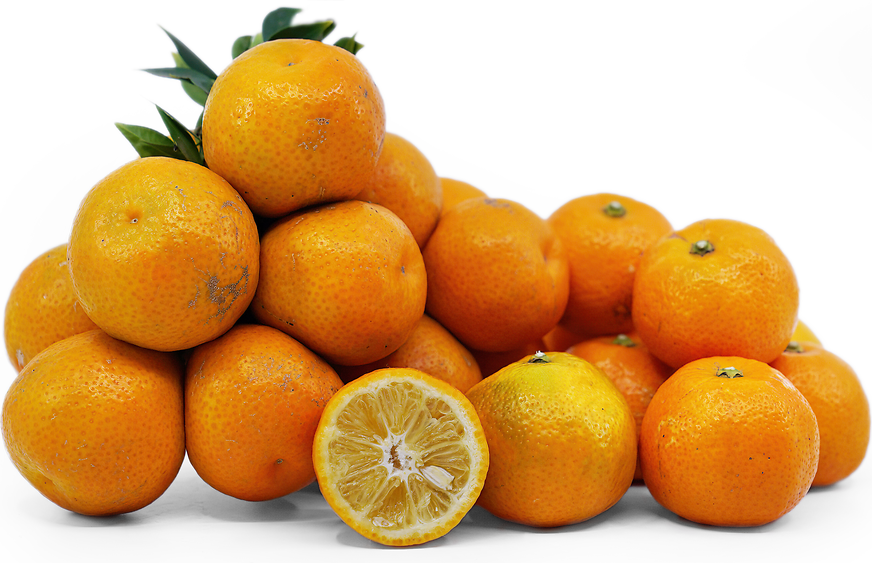


Chinotto Oranges
Estimated Inventory, lb : 0
Description/Taste
Chinotto oranges are small in size, averaging 4-5 centimeters in diameter, and are round to oblate in shape growing in dense clusters, sometimes leaving small indentations on the shoulders of each orange. The medium-thick rind is rough with many oil glands, is relatively easy to peel, and matures from green to orange when ripe. Underneath the rind, the flesh is fibrous, pale yellow to orange, and is considerably seedy with a moderate juice content. Chinotto oranges are somewhat acidic, depending on the growing climate, and are extremely bitter due to oils from the pith and skin.
Seasons/Availability
Chinotto oranges are available in the mid-winter through spring.
Current Facts
Chinotto oranges, botanically classified as Citrus myrtifolia, are a sour orange variety that belongs to the Rutaceae or citrus family. Also known as the Myrtle-leaf orange because of its resemblance to the myrtle tree, there are four varieties of Chinotto oranges including the boxwood leaved, crinkle leaved, large, and dwarf variety. Chinotto oranges are incredibly sour, and the essential oils are predominately used to flavor candies, liquors, and soft drinks. The trees are also prized for their slow growing, compact nature, reaching up to three meters in height, and are one of the only citrus trees with no thorns. Chinotto trees are highly ornamental, and the fruits remain on the tree for the majority of the year, providing bright colors to home gardens year-round.
Nutritional Value
Chinotto oranges are an excellent source of vitamin C and also contain fiber and folate.
Applications
Chinotto oranges are best suited for flavoring and are not typically consumed raw due to their sour, bitter nature. The fruit is used in marmalade, jams, and syrups because of their high pectin content and the essential oils are used to flavor cocktails. The fruit is also candied whole and consumed as a dessert, used in marinades, chutneys, mustard, and teas, or substituted for other sour oranges, such as the Seville. Chinotto oranges pair well with focaccia, aged cheeses, shortbread cakes, fish, poultry, paella, and curries. The fruits will keep up to a week at room temperature and up to a month in the refrigerator.
Ethnic/Cultural Info
Sour orange flavoring, including Chinotto, is especially popular in the Mediterranean region and the Middle East, where it is sometimes used to flavor dishes much like lemon zest is used in the United States. Chinotto oranges are also well-known as a flavoring agent for Amari, an Italian herbal liqueur, and a dark brown carbonated drink labeled as “Chinotto” that is mixed with over twenty different herbs including cinnamon and rhubarb to create a bitter-sweet flavor. In addition to beverages, Chinotto oranges are popularly candied in Italy and stored in maraschino to create a sweet treat. These candied fruits were traditionally served as a condiment in Italian cafés and bars in the late 19th century and were also commonly used in drinks during the holiday season.
Geography/History
Sour oranges are native to southeastern Asia and were believed to have been introduced to Italy in the 16th century. While the exact origins of the Chinotto orange are unknown, the fruits are a natural mutation of a sour orange and are primarily cultivated in Liguria, Italy. Chinotto oranges can also be found at farmers markets and specialty grocers in Savona, Calabria, Sicily, and Tuscany in Italy and in the United States, France, and Malta.
Recipe Ideas
Recipes that include Chinotto Oranges. One
| Stirred Not Shaken |
|
Chinotto Rock 'n' Rye |
| Chickadee Homestead |
|
Homemade Orange Jam |




